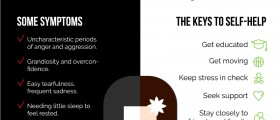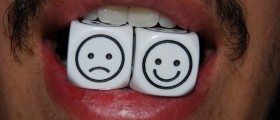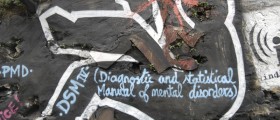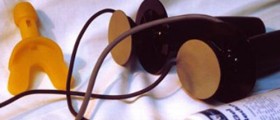
Bipolardisorder patients, especially those with type II or cyclothymic disorder oftenexperience major depression, anxiety and panic disorders, as well as phobias.Bipolar disorder in children is sometimes mistaken for attention-deficithyperactivity disorder (ADHD). These two conditions can sometimes co-occur andone study showed that 65% of bipolar adolescents were also eligible for ADHD.Both conditions are most common in white males, and patients with bothconditions experience the most severe symptoms. According to some scientists,it is possible that the two conditions are just variants of one and the samedisease.
One ofthe potential dangers of living with bipolar disease is the risk of suicide.This is particularly true for medically unattended patients. Mixed mania anddepression are the periods of highest risk when 10-15% of bipolar disorder Ipatients actually commit suicide. Research shows that patients with bipolardisorder II and anxiety disorder face even greater risk of suicide, which iseven higher than in patients with rapid cycling (a more serious form of bipolardisorder). Childrenwith bipolar disease are more affected by the condition than adults, especiallyin early and pre-adolescence period, and are at higher risk of commiting suicide, since staying unwell for longer time, they can experience mixed mania and multiple and frequent cycles.Mental flexibility, the speed at which information is processed, and short andlong-term memory may be the problems that bipolar patients are faced with.Whether biologically based or a result of used medications, they areparticularly present during manic episodes.
Manicphases in small number of people with bipolar disorder are marked by theirtendency to get highly productive and creative. Still, it is more often thecase that patients in this phase get angry, violent, promiscuous, paranoid andreckless, especially with money, which is then followed by the depressionstage, guilt and low self-esteem. Apart from smoking cigarettes, as a form ofself-medication suggested by some doctors, 60% of bipolar disease patients tendto abuse alcohol and drugs. The consequences of such behaviors affect thefamilies and loved ones of the patients, who are often in denial of thiscondition, just like the patients.
Physicalconditions are sometimes associated with mental illnesses. Bipolar patientsoften suffer from a wide range of conditions, such as diabetes,gastrointestinal problems, heart and lung diseases, skin infections,hypertension, hyperthyroidism and even cancer. This is due to the medications which are used to treat the bipolar condition, and the fact they don’t seek medical care.Still the risk for these conditions is higher with bipolar patients. Forexample, diabetes is found three times more in bipolar patients than in therest of the population, due to obesity, because estimated 25% of patients areoverweight. Elevated blood pressure leading to heart conditions is alsoprevalent with such patients. Patients with bipolar II disorder are moresusceptible to headaches compared to those with bipolar I while hypothyroidismmay appear as a result of lithium use, which is used to treat bipolardisorders. In women however, low thyroid levels (hypothyroidism) are morecommon without any particular association to the drugs used, making it apotential risk factor for bipolar disorder.

















Your thoughts on this
Loading...